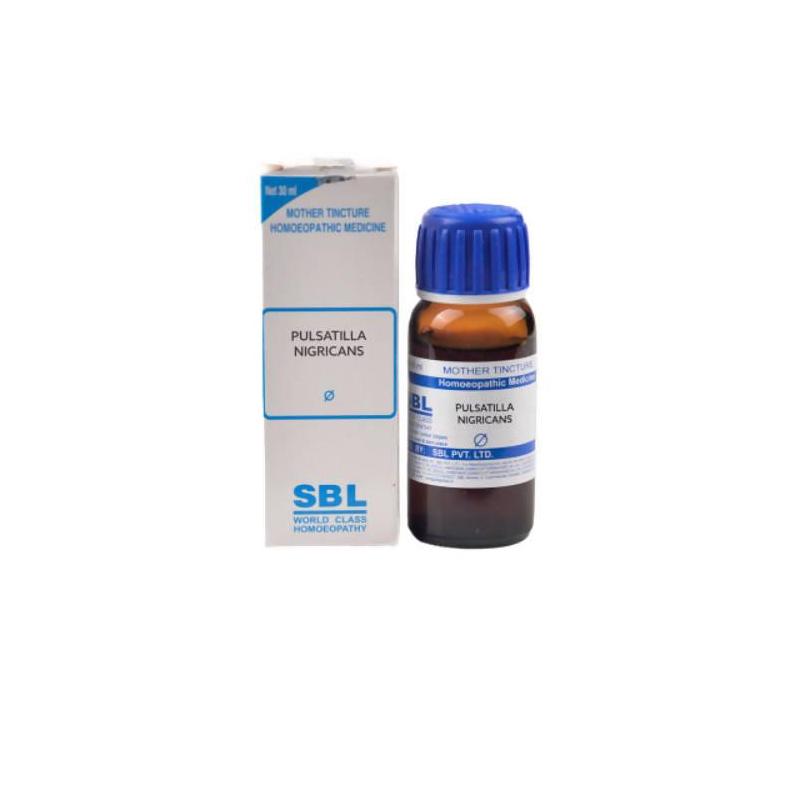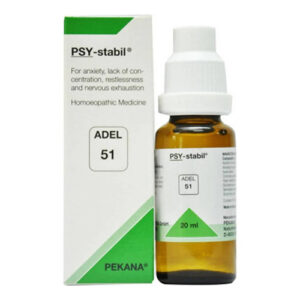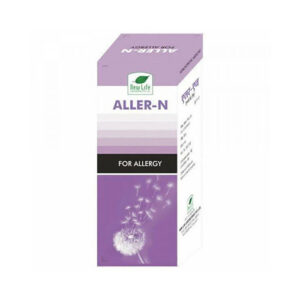Indication / Benefits
Pulsatilla Nigricans, commonly known as Wind Flower, is a homoeopathic medicine derived from the plant Pulsatilla. Belonging to the Ranunculaceae family, it has been traditionally valued for its therapeutic properties in treating emotional and menstrual disorders. In homoeopathy, Pulsatilla Nigricans is primarily used to address conditions such as mood swings, tearfulness, and clinginess. It is also employed for its effects on irregular or delayed menstruation, digestive issues, and respiratory ailments aggravated by heat.
Common Names:
Hindi: Pasque flower
English: Wind Flower
?
SBL’s Pulsatilla Nigricans can be helpful in the following conditions:
- Dyspepsia
- It helps in cases of dyspepsia, characterized by a feeling of great tightness after meals, necessitating loosening of clothing.
- There is aversion to fat and warm foods, along with eructations that leave a lingering taste of food.
- Patients may experience heartburn, flatulence, and bitter taste in the mouth. Vomiting of food consumed long before is also common.
- Stomach pains, resembling those of subcutaneous ulceration, may appear an hour after eating.
- There is also a feeling of weight, particularly in the morning upon waking, and a gnawing, hungry sensation.
- Hoarseness and Cough
- It helps in cases of capricious hoarseness that fluctuates. Patients experience dry coughs in the evening and at night, compelling them to sit up in bed for relief.
- Coughs in the morning are loose, with copious mucous expectoration.
- There is chest pressure, soreness, and significant epigastric soreness.
- Urination may occur simultaneously with coughing. Chest pain, resembling that of an ulcer, is also present.
- Expectoration is bland, thick, bitter, and greenish. Shortness of breath, anxiety, and palpitations worsen when lying on the left side. A suffocating feeling may develop while lying down.
- Menstrual irregularities
- In women, Pulsatilla addresses menstrual irregularities such as amenorrhea and suppressed menses. The condition may result from wet feet, nervous debility, or chlorosis.
- Menses may arrive late, with flow that is scanty, thick, dark, clotted, changeable, or intermittent. Symptoms include chilliness, nausea, downward pressure, and intermittent pain during menses.
- Leucorrhea may also be present, characterized by acrid, burning, and creamy discharges. There is often associated back pain and fatigue.
- Diarrhea may occur during or after menses.
- Musculoskeletal pain
- Patients may experience drawing and tensive pain in their thighs and legs, accompanied by restlessness and chilliness.
- Limb pain may shift rapidly and end abruptly. There may also be numbness around the elbow, painful hip joints, swollen knees with tearing and drawing pains, and a boring heel pain that worsens toward evening, particularly if the affected limb is allowed to hang down.
- Veins in the forearms and hands may swell, and the feet may become red, inflamed, and swollen.
- The legs may feel heavy and weary.
- Skin complaints
- Patients may develop urticaria following rich meals, with aggravation from diarrhea or delayed menstruation and exacerbated by undressing.
- The remedy may also be used for conditions such as measles and acne during puberty and varicose veins.
- Fever and Temperature Sensitivities
- Patients may experience a persistent sense of chilliness, even in warm environments, without any accompanying thirst.
- Chills may be associated with localized pain, worsening towards the evening, particularly around 4 pm. At night, heat may become intolerable, accompanied by distended veins and alternating feelings of heat and cold in different parts of the body.
- Sweating may occur on one side of the body, with pain during this period.
- After fever, patients may experience headaches, diarrhea, loss of appetite, and nausea.
- Changeable moods
- It is often indicated for individuals with a mild, gentle, yielding disposition who are emotionally sensitive and easily moved to tears.
- These individuals may cry readily, especially when talking. They exhibit changeable moods and contradictions in behavior or symptoms. Seeking sympathy and comfort, they prefer open air despite feeling chilly.
- They may experience religious melancholy, fearfulness in the evening, and morbid dread, particularly to the opposite sex.
- Highly emotional, they swing between extremes of pleasure and pain, exhibiting a mentally unstable or unpredictable temperament.
- Headache
- Wandering stitches around the head that extend to the face and teeth. Patients often complain of frontal and supra-orbital pains.
- Neuralgic pains may begin in the right temporal region, accompanied by scalding lachrymation on the affected side.
- Headaches worsen with overwork and are alleviated by exposure to the open air.
- Patients may also experience vertigo and pressure on the vertex.
- Ear and Eye infections
- Sensation as if something is being forced outward from the ears, with difficulty in hearing as if the ear were stuffed.
- Otorrhea (discharge from the ears) is common, characterized by thick, bland discharge with an offensive odor.
- External ear inflammation with swelling and redness can occur, along with otalgia (ear pain), which worsens at night.
- Conjunctivitis (pink eye) with subacute inflammation and dyspepsia, exacerbated in warm rooms.
- Itching, burning, and profuse discharge of mucus from the eyes, along with inflamed and agglutinated eyelids.
- Coryza
- Coryza (runny nose) with right nostril blockage and pressing pain at the root of the nose.
- Loss of smell, discharge of large green fetid scales.
- Nasal bone soreness.
- Facial neuralgia
- Facial neuralgia may be right-sided, with profuse lachrymation and swelling of the lower lip, which may crack in the middle.
- ?Facial pain (prosopalgia) worsens towards evening and midnight, accompanied by chills.
- Mouth and Dental Issues
- Greasy taste in the mouth, dryness without thirst, and a frequent need to lick dry lips.
- A crack may appear in the middle of the lower lip, and the tongue may be yellow or white with a tenacious mucus coating.
- Toothache, especially relieved by holding cold water in the mouth, offensive odor, and alternations in taste (bitter, bilious, greasy, salty, foul) are also common.
- Food, especially bread, may taste bitter, and there may be an excess of sweet saliva.
Key Ingredients
Pulsatilla nigricans
Dosage
As prescribed by the physician.
Safety Information
- Read the label carefully before use.
- Do not exceed the recommended dose.
- Keep out of the reach of children.
- Store in a cool, dry place; avoid sunlight and heat.
- Avoid strong smells (onion, hing, mint, garlic) during use.
- Allow 15 minutes gap between two homoeopathic medicines, 30 mins gap between Homoeopathic medicines and food, or one hour gap between Homoeopathic medicines or another system of medicines.




